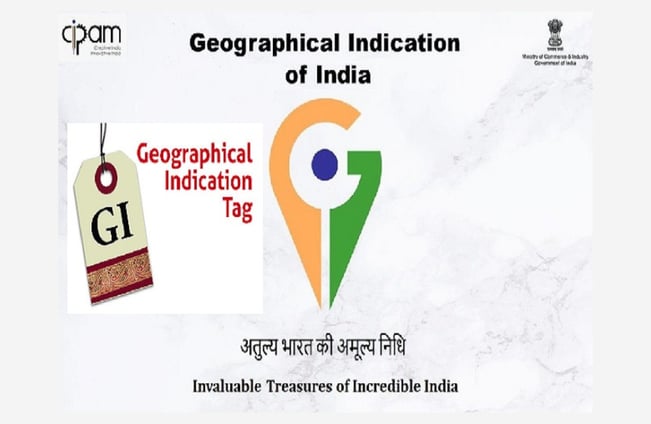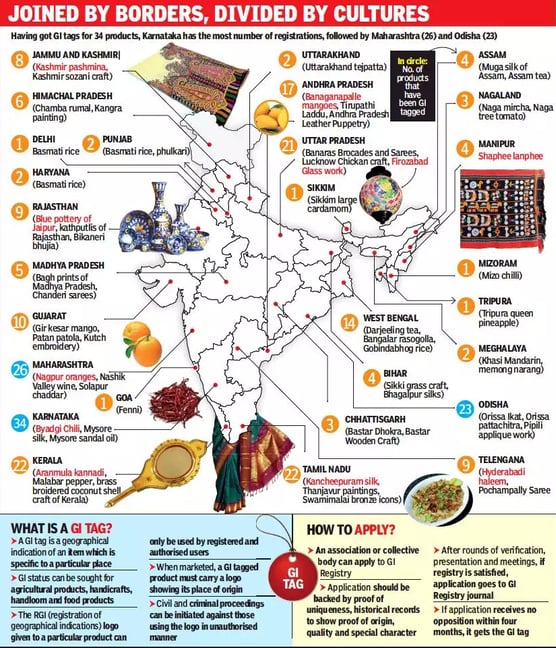Avail 40% OFF on all tuition fees. Limited period offer.
Exploring India's unique cultural legacy using GI tags.
A selection of 17 items from four states, including Odisha's Lanjia paintings, Arunanchal's Wancho Wooden Craft, and West Bengal's Kai Chutney, received the coveted Geographical Indication badge.
1/9/20241 min read


GI Tags: India has now produced 500 items.
- Tamil Nadu leads the country in the number of GI-tagged items with 61, followed by Uttar Pradesh.
- With 285 and 196 goods, respectively, handicrafts and agriculture make up more than 80% of the GI classified category.
- The products included in the Graphical Indications register can be divided into five main groups:
1. Crafts
2. Farming
3. Food Items
4. Produced
5. Organic
GI tag: what is it? Who bestows it?
✅ Who issues GI tags in India?
- The tag is valid for 10 years, after which it can be renewed.
- The Union Ministry of Commerce and Industry is in charge of launching the India Geographical Indications logo and slogan.
Top 5 Advantages of GI Tag:
1. It promotes the preservation of biodiversity, local knowledge, and natural resources.
2. It transforms into entrepreneurship with gig workers, resulting in a passion economy, a new opportunity for individuals to monetize their abilities and grow their enterprises.
3. The labour-intensive character of GI provides the greatest answer for increasing India's employment-to-population ratio.
4. It provides a strategy to reverse urban migration while preserving India's old crafts, culture, and cuisine.
It also helps to revitalise micro, small, and medium-sized businesses (MSMEs).
5. It also intends to address the issues
- Strengthening ability and providing access to financing, whether official or informal.
- creating marketing links,
- Research & Development,
- product, innovation, and competitiveness in both domestic and global markets.


